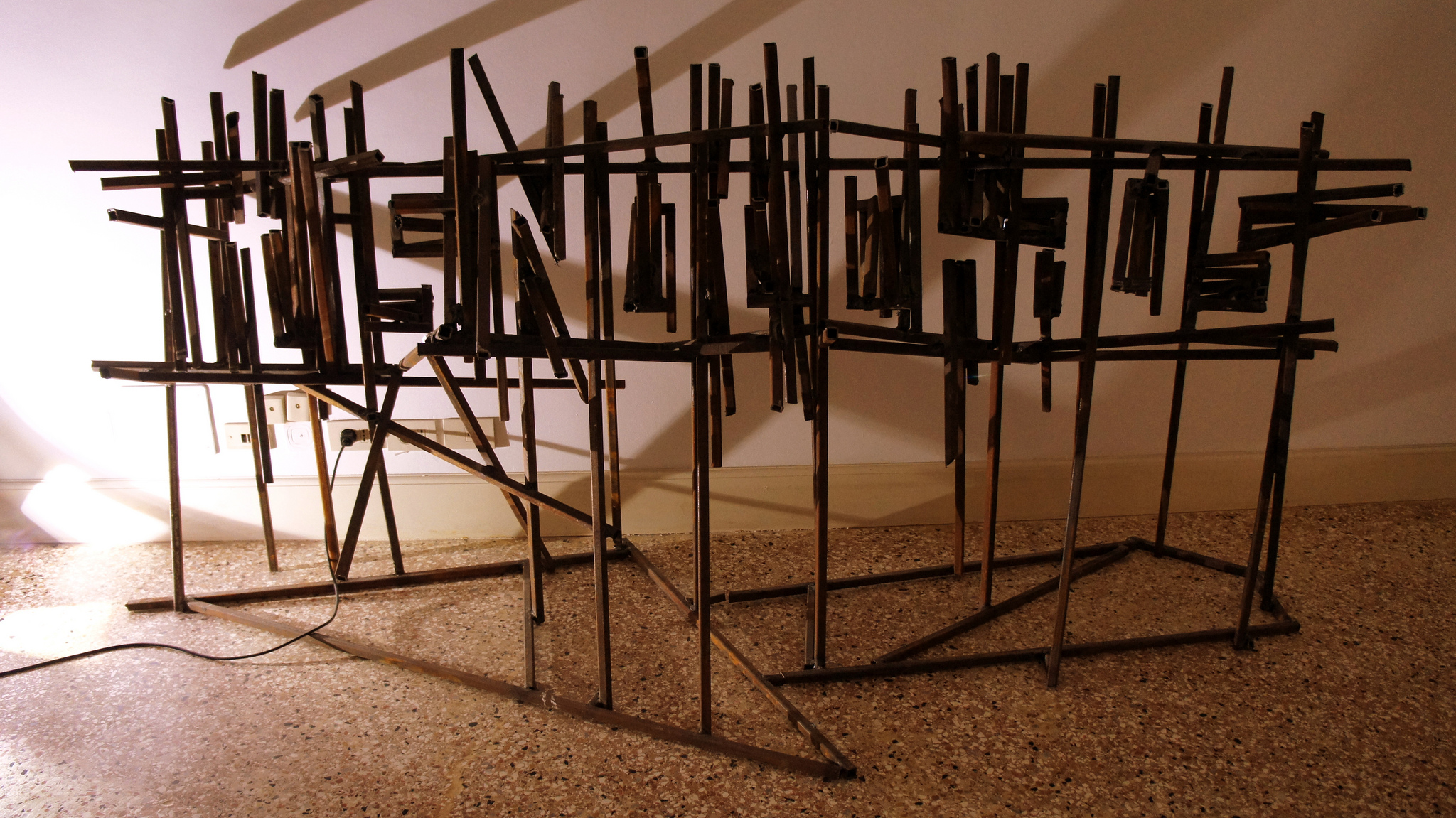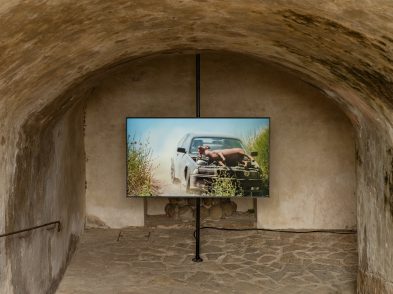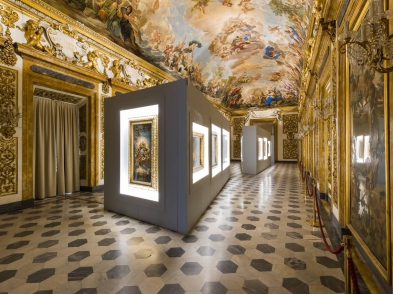The 55th Venice Biennale for visual art comprises 88 national pavilions located in every part of the city, each hosting its own exhibition. At the Biennale’s centre, in the Giardini and Arsenale, is the headline exhibition, The Encyclopaedic Palace, which alone includes 158 artists. In addition, 50 shows, from small installations to major historic retrospectives, occupy museums, churches and palazzi across Venice. There is installation, performance, sculpture, film and even a little painting. The organisers predict half a million visitors before this festival of the modern and contemporary closes on November 24, 2013.
What has the Biennale become? Questions outpace answers. Is it a showcase for artists? Or is it a market where deals are made and trends set?
Sometimes, especially in its glitzy opening week, it resembles a gigantic catwalk for the collectors, critics and curators who command the high seas of today’s art world. In this context, the artists seem like mere oarsmen. And the Biennale has never been so big. As it grows, the task of making sense of the spectacle, of grasping the bigger picture, recedes into deeper impossibility. Indeed, there may be no sense to be made at all.
The main exhibition, however, takes a stab at coherence and, unusually for these occasions, seems to succeed. Called The Encyclopaedic Palace, multiple works by 158 artists, living and dead, roll out through 43 mostly gigantic rooms.
In the first are Carl Gustav Jung’s drawings of his visions. They give a flavour of the kind of ‘encyclopaedia’ the show is opening and of the selector’s wide scope in juxtaposing ‘amateur’ artists with professionals. Artists explore knowledge of the intuitive, psychological kind as well as look objectively at the world outside. Tantric paintings from India, Shaker gift drawings from the 1800s and diagrams that manage negative energy from 1920s Switzerland converse with established art figures and emerging newcomers. The show, like the whole Biennale, is a storehouse teeming with human imagination in which maps are almost useless. Tucked away in a dark corner is a piece that unwittingly offers the most articulate summary of this state of affairs.
Tacita Dean’s captivating short film, The Friar’s Doodle, takes a circuitous tour of a single drawing once made by a young monk in an old book. He outlined stairs and corridors, religious symbols and swollen organs. Full of elaborately drafted details and detours, the journey goes on and on in its absorbing, dizzying way. At no point does the screen reveal the entire image. We are left with fragments: impressions of transient thoughts portray a state of mind. And, just as with the Biennale, the drawing has no apparent point of exit.
Indeed, this edition has a lot of fragments; breaking down, building up and working together provide unofficial themes. Spain’s pavilion contains the rubble of demolished buildings; Hungary’s gathers excavated unexploded bombs; the detritus in Australia’s building is more organic and consciously organised by shape and colour; while Japan presents a cacophony of diverse hands making lighter work, such as of one haircut.
So head for the Romanians. Their lofty, light-filled space is empty except for five casually dressed young people who wordlessly mime a selection of paintings, sculptures and installations shown in the previous 54 Biennales.
Or target Austria’s pavilion. Mathias Poledna’s cartoon homage to Hollywood lasts just over three minutes. It features a singing, dancing donkey in a sailor suit whose moves, and those of his woodland companions, are quotes from musicals like Singing in the Rain and Snow White. Its infectious soundtrack, the 1930s melody ‘I’ve got a feeling you’re fooling,’ seems to carry happily across the hubbub of the Giardini.
Perhaps continue as far the German pavilion, which this year is occupied by the French. They have chosen Albanian artist Anri Sala, who, now settled in Berlin, has made three films about performing a piano piece for one hand by Ravel.
Meanwhile, at the French building, the Germans have programmed artists from South Africa, India and China (the ubiquitous Ai Weiwei, whose works are also on display elsewhere in Venice) as well as one from Germany.
With all this cross-referencing and intertwining, a step into the city is advisable. Among the pavilions located there is Iraq’s. What goes for conceptual nimbleness in the pavilions of developed nations becomes essential creative revival and a positive attitude to adversity here.
Angola’s quietly outstanding contribution won the Biennale’s top prize for a pavilion. The African state has moved into the splendid palazzo Cini, where elegant walls support a catalogue of Renaissance masterpieces by Sassetta, Piero della Francesco and Pontormo. Meanwhile, the marble floors resemble a print factory. Stacked upon wooden palettes are piles of large-format colour prints. They depict locations in Angola’s capital and visitors can carry off copies and create their own panorama in other places. The display contrasts aesthetics as well as polarities of wealth. Edson Chagas’ photographs illustrate humble objects—a box, shoe or a stool—abandoned in streets animated not by people but by the bright and bold colours decorating walls and houses. Angola is a newcomer to this event. Despite the global economic crisis, more and more countries booked their spaces in art’s brightest limelight.
Another example is the Holy See, which has looked beyond its boundaries, even those of Catholicism, to commission a handful of artists to interpret the first 11 chapters of the Book of Genesis. The results span digital technology and photography, but perhaps the medium that gets into the soul of this mighty theme is the oldest (and, at this Biennale, the rarest): painting. Working with the idea of ‘re-creation,’ Lawrence Carroll’s huge, box-shaped canvases bear the markings of constant growth and remaking. Australian born but California raised and now predominantly based in Italy, Carroll relies on his handling of materials, scale and minimal colour to imbue abstract images with metaphoric meanings. His paintings resemble crates that travel constantly and are patched with new skins, experiences and embellishments. They appear permanently unfinished, endowing their surroundings with new stories, some anticipated by partly buried memories.
And that may be one more metaphor for the Biennale experience.
The 55th Venice Biennale International Exhibition of Art
Giardini, Arsenale and locations throughout Venice
Until November 24, 2013







